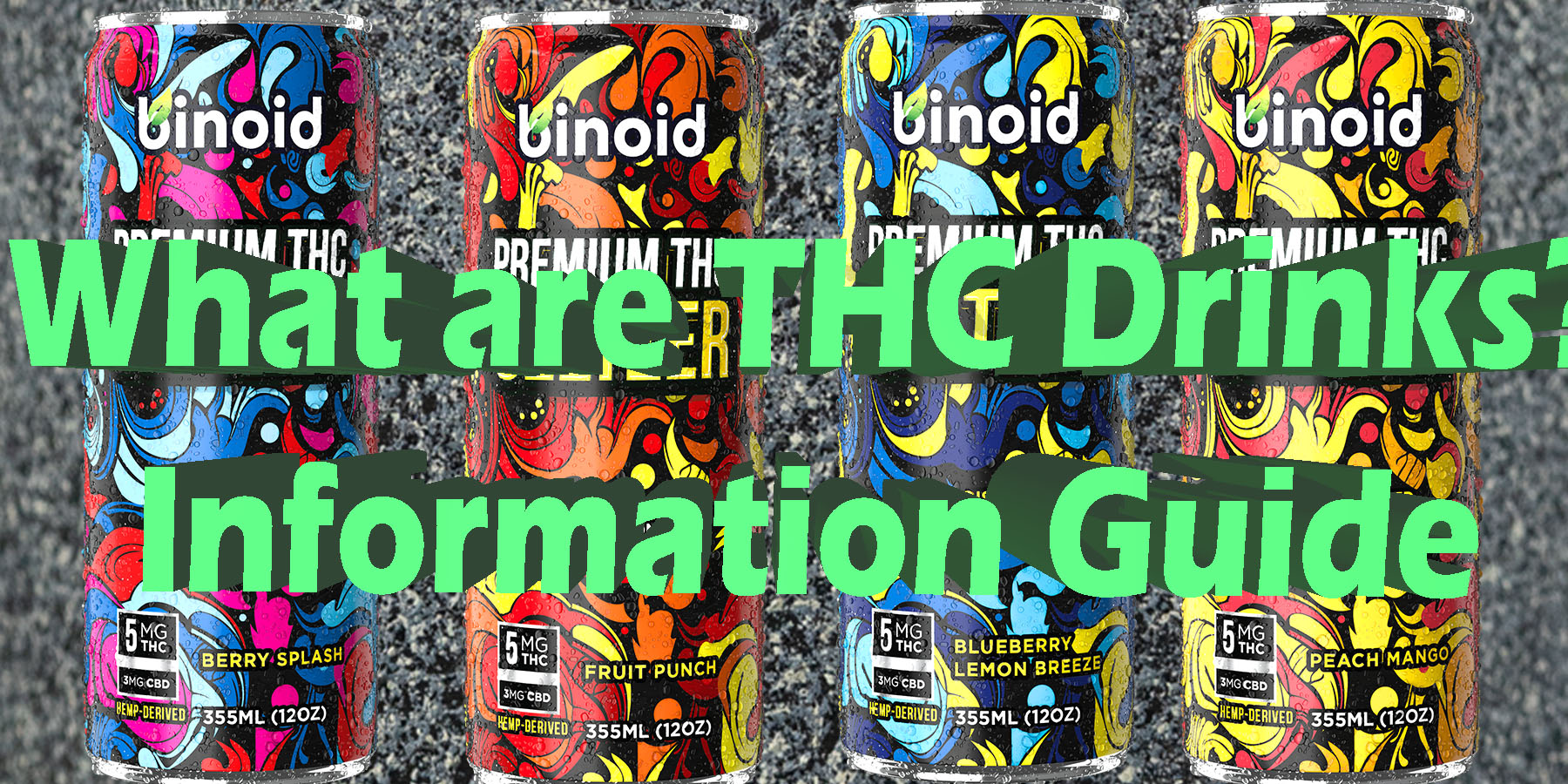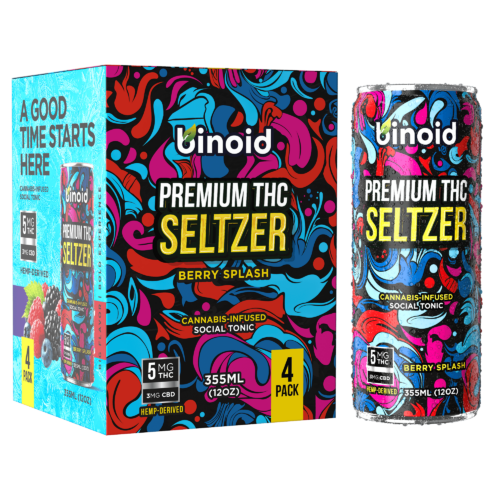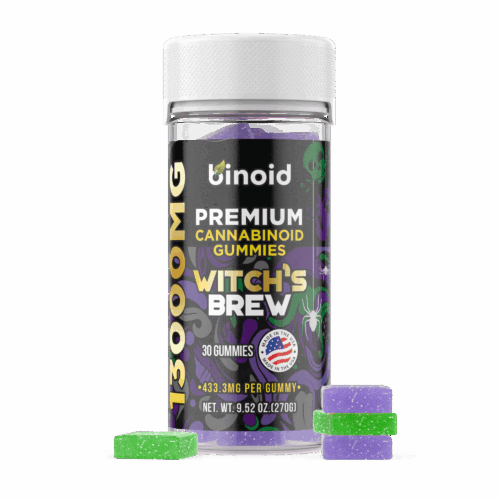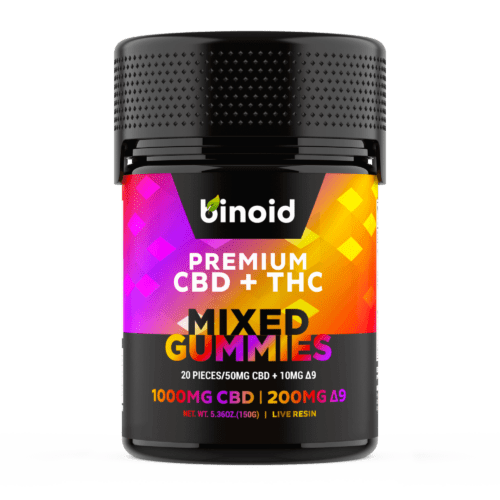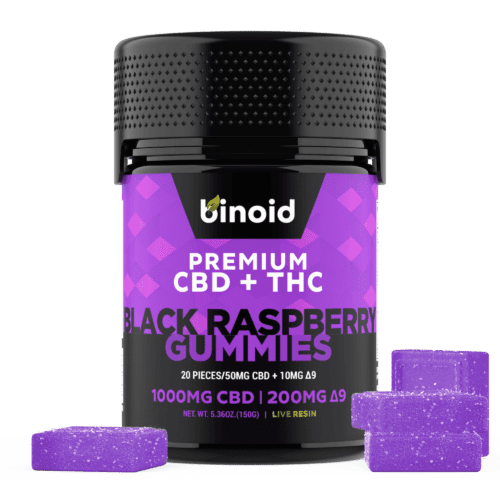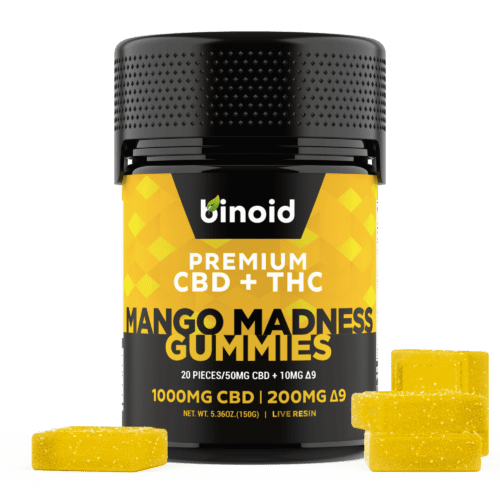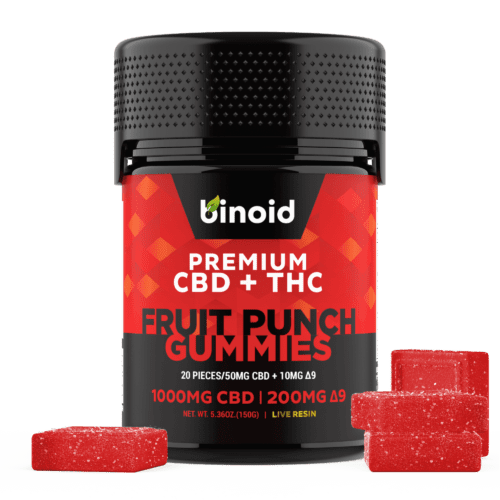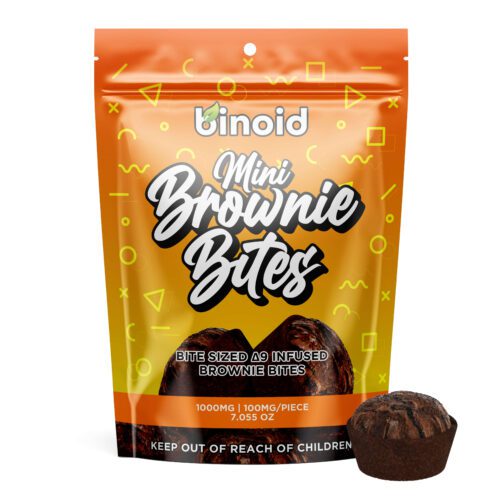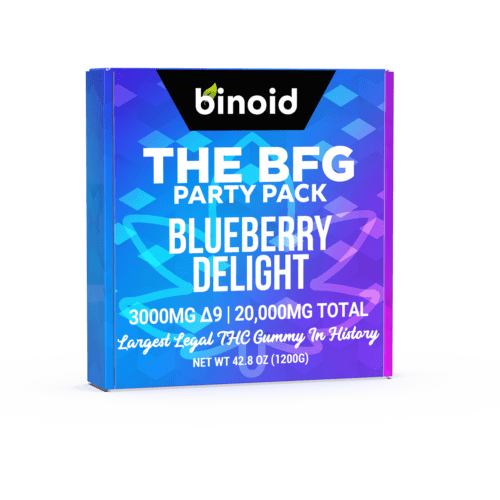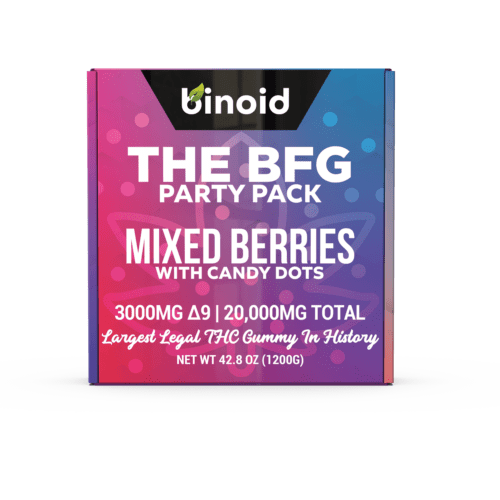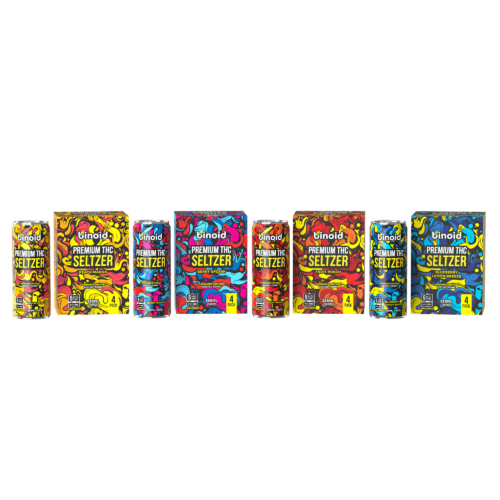The world of cannabis is in a constant state of evolution, with new and exciting products emerging to meet the diverse preferences of consumers. Gone are the days when traditional methods were the only way to experience the unique properties of this ancient plant. In recent years, a new contender has entered the arena, capturing the attention of both seasoned cannabis enthusiasts and curious newcomers alike: the THC-infused beverage.
These drinks represent a paradigm shift in how people can enjoy cannabis, offering a refreshing and approachable alternative that seamlessly integrates into social settings and personal relaxation rituals. They are more than just a novelty; they are a sophisticated and nuanced way to experience the delightful sensations that THC can offer. This burgeoning category is redefining the landscape of cannabis consumption, providing a precisely dosed, and often delicious path to a state of chilled-out bliss. As the market expands, the variety and ingenuity of these beverages continue to grow, promising a future where your favorite way to unwind might just come in a can or a bottle.
To Buy THC Drinks Click Here
Recommended products
Getting Some Key Insights into THC
Before covering the effervescent world of THC-infused drinks, it’s essential to have a foundational understanding of the star ingredient itself: Tetrahydrocannabinol (THC). THC the primary psychoactive compound found in the cannabis plant, meaning it’s the component responsible for the sense of euphoria and altered perception that is often associated with marijuana use. THC interacts with the body’s endocannabinoid system (ECS), a complex cell-signaling network that has a crucial role in regulating various physiological processes and maintaining internal balance, or homeostasis.
The ECS is composed of endocannabinoids (cannabinoids made by our own bodies, like anandamide), receptors (primarily CB1 and CB2), and enzymes. When THC enters the body, its molecular structure allows it to perfectly bind to these receptors, particularly the CB1 receptors concentrated in the brain and central nervous system, effectively mimicking our natural endocannabinoids but with more pronounced and prolonged effects. It is this powerful interaction that has made THC a subject of fascination and scientific inquiry for decades, driving its immense popularity across the globe and forming the basis for its unique impact on mood and perception.
The history of THC is intrinsically linked to the long and storied history of the cannabis plant itself, which has been used by various cultures for millennia for medicinal, spiritual, and recreational purposes. Ancient texts reveal its widespread use; for instance, the Chinese Emperor Shen Nung documented its use in his pharmacopeia around 2727 B.C., and in ancient India, a cannabis-infused drink called “bhang” has been a staple in religious ceremonies for centuries. Despite this long history of human use, the specific isolation and synthesis of the THC molecule is a much more recent scientific achievement.
It wasn’t until 1964 that Israeli chemists Raphael Mechoulam and Yechiel Gaoni at the Weizmann Institute of Science first isolated and elucidated the structure of delta-9-tetrahydrocannabinol. This groundbreaking discovery was a pivotal moment in cannabis science, as it finally identified the specific compound responsible for the plant’s most well-known effects. This breakthrough paved the way for a deeper understanding of how cannabis interacts with the human body, transforming it from an herbal remedy of the ancients into a compound that could be studied, quantified, and understood on a molecular level, opening the door for more targeted research and the development of the diverse array of THC products we see on the market today.
THC’s effects can be a multifaceted and deeply personal experience, varying significantly from one individual to another based on factors such as dosage, tolerance, genetics, and even mindset. Generally, the consumption of THC can lead to a sense of euphoria, a feeling of lightheartedness, and a general state of relaxation. Many users report an enhanced sensory experience, where colors may seem more vivid, music more resonant and layered, and flavors more pronounced and complex.
It’s also important to understand the biphasic nature of THC’s effects, where lower doses may produce desirable feelings of calm and bliss, while higher doses could potentially lead to the opposite effect, inducing feelings of unease or paranoia. This cannabinoid can also stimulate the appetite, a phenomenon colloquially known as “the munchies”, and produce an altered perception of time, which can contribute to a feeling of being pleasantly detached from the usual pressures of the clock. Understanding one’s own sensitivity and adhering to the mantra of “start low and go slow” is always a prudent approach for those new to THC to ensure a positive and enjoyable outcome.
The immense popularity of this cannabinoid is undeniable in contemporary culture, representing a significant economic and social shift. From its deep roots in counter-culture movements to its current status as a mainstream wellness and recreational product, THC has captivated a broad and diverse audience that transcends old stereotypes. The ongoing legalization of cannabis in many parts of the world has further fueled this popularity, thus unlocking a multi-billion dollar global market and making THC more accessible than ever before.
This has led to a surge in innovation, with companies developing a wide range of products to cater to a consumer base that now includes everyone from young professionals and busy parents to retirees. The appeal of THC lies in its ability to provide a unique form of escapism and relaxation, offering a way for people to unwind, socialize, and explore different states of consciousness in a controlled and increasingly sophisticated manner. This cultural and commercial explosion ensures that THC’s journey from ancient herb to modern commodity is far from over.
Recommended products
What are THC Drinks Then?
In the ever-expanding universe of cannabis products, THC drinks have emerged as a particularly exciting and accessible option. At their core, THC drinks are simply beverages that have been infused with a measured dose of Tetrahydrocannabinol. These pre-made and packaged drinks often offer more socially acceptable way to consume cannabis. Unlike traditional edibles, which can have a delayed and sometimes unpredictable onset of effects, many THC drinks are crafted using advanced technologies that allow for a quicker and more controlled experience. This makes them an attractive choice for those who are new to cannabis or for anyone seeking a more manageable and predictable journey into a state of blissful relaxation. The convenience of a ready-to-drink beverage also adds to their appeal, eliminating the need for any preparation or paraphernalia.
The variety of THC drinks on the market is truly astonishing, with a beverage to suit almost any palate or occasion. These drinks are crafted through a process that involves infusing a base liquid with a THC extract, often a water-soluble form to ensure even distribution and absorption: absorption. So, let’s break them down here for a moment:
THC Seltzers: These beverages have quickly become the darlings of the THC drink world, perfectly capturing the modern consumer’s desire for light, refreshing, and low-calorie options. Often presented in slim, elegantly designed cans, THC seltzers are a direct and compelling alternative to the ubiquitous alcoholic hard seltzers that have dominated social scenes. They typically feature crisp carbonation and are infused with subtle, natural fruit flavors like lime, grapefruit, or black cherry, offering a sophisticated taste that is never overpowering. The primary appeal lies in their “sessionable” nature; with low doses of THC, usually between 2mg and 5mg, consumers can enjoy several over an evening without feeling overwhelmed. This controlled experience provides a gentle, uplifting buzz that enhances social interactions rather than hindering them. Marketers have brilliantly positioned these seltzers as a hangover-free way to unwind and connect, appealing directly to the “sober curious” and health-conscious crowds. The use of nanoemulsion technology ensures a quick onset, so the gentle euphoria can be felt in as little as 15 minutes, making the entire experience more predictable and enjoyable. For many, THC seltzers represent the future of social drinking, offering all the bubbly fun with a decidedly more blissful twist. They are the ideal choice for a relaxed afternoon by the pool, a backyard barbecue, or any occasion that calls for light-hearted refreshment.
THC Sodas: For those with a sweet tooth and a love for classic Americana, THC-infused sodas offer a delightful and nostalgic journey. These beverages tap into cherished memories of childhood treats, delivering familiar flavors like rich root beer, creamy orange cream, classic cola, and zesty ginger ale, all with a modern cannabis twist. Unlike the subtlety of seltzers, THC sodas are bold in flavor, providing a full-bodied and satisfyingly sweet experience that makes consuming cannabis feel like a genuine indulgence. They often come in slightly higher doses than seltzers, catering to consumers looking for a more pronounced euphoric effect to accompany the vibrant taste. The branding and packaging frequently play on retro themes, with colorful designs and classic bottle shapes that evoke the feeling of an old-fashioned soda fountain. This clever marketing makes them incredibly approachable and fun, removing any lingering intimidation that might be associated with cannabis consumption. They are perfect for a movie night, a casual get-together with friends, or as a base for a creative non-alcoholic float. THC sodas seamlessly blend the worlds of confection and cannabis, creating a product that is both comforting and exhilarating in every bubbly sip.
THC Waters: THC-infused waters are the embodiment of “less is more,” designed for the purist and the health-conscious consumer who prioritizes clean, simple hydration. These beverages strip away all non-essentials, offering a product that is often free of sugar, calories, and artificial ingredients, focusing solely on the core components: purified water and fast-acting, water-soluble THC. The flavor profile is typically neutral or features a very delicate hint of natural fruit essence, such as cucumber, lemon, or berry, which is meant to refresh rather than overwhelm the palate. THC waters are the perfect companion for a workout, a yoga session, or any activity where maintaining hydration is as important as achieving a state of calm focus. The experience is often described as a “clean” high, a clear-headed sense of well-being and gentle bliss that complements an active and mindful lifestyle. Because they are so discreet and resemble any other bottled water, they offer a subtle way to consume cannabis throughout the day without drawing any attention. They represent a functional evolution in cannabis beverages, merging wellness and recreation into a single, crystal-clear product.
THC Lemonade: There is perhaps no beverage more universally associated with refreshment than lemonade, and its THC-infused counterpart elevates this classic to a new level of chilled-out bliss. The inherent tartness and zesty sweetness of fresh lemons provide a perfect counterbalance to the subtle earthy notes of cannabis, creating a flavor profile that is both invigorating and incredibly satisfying. Brands offer a wide spectrum of lemonade styles, from classic cloudy versions to sparkling varieties and exciting flavor fusions like strawberry or raspberry lemonade. These drinks are marketed as the ultimate beverage for a sunny day, evoking images of porch swings, picnics, and carefree summer afternoons. The dosage can range from sessionable low-dose options to more potent “high-dose” versions for experienced consumers, making it a versatile choice for different occasions and tolerance levels. THC lemonade’s broad appeal lies in its familiarity; it’s a comfortable and delicious entry point for those new to cannabis beverages. It’s a drink that promises to quench your thirst while lifting your spirits, making it a consistently popular choice across the market.
THC Tea: Infusing tea with THC creates a beverage that feels both ancient and modern, combining the time-honored wellness rituals of tea drinking with the contemporary science of cannabis infusion. This category offers a wonderfully diverse range of experiences, tailored to specific moods and times of day. Consumers can find soothing chamomile or lavender blends infused with indica-dominant THC for a deeply relaxing evening experience designed to promote tranquility and restfulness. Conversely, there are uplifting green tea or black tea varieties combined with sativa-leaning THC, perfect for sparking creativity or enjoying a calm yet alert state of mind during the day. The infusion process is carefully managed to preserve the delicate flavors of the tea leaves while ensuring consistent and reliable dosing. For many, THC tea is a holistic experience, a way to engage in a mindful self-care practice that nurtures both the body and the mind, providing a gentle path to a state of peaceful euphoria.
THC Coffee: The combination of cannabis and coffee, often dubbed the “hippie speedball”, offers a truly unique and dynamic experience that intrigues both coffee aficionados and cannabis enthusiasts. These products, available as pre-made cold brews or ground coffee for home brewing, blend the stimulating, alertness-promoting effects of caffeine with the euphoric and perception-altering qualities of THC. The result is a state of being that many users describe as “alert-relaxation”—a focused and energized mind coupled with a calm and relaxed body. This can be an ideal combination for creative projects, focused work sessions, or social situations where one desires to be both engaged and at ease. However, the interplay between a stimulant (caffeine) and THC can be complex, and brands carefully formulate these beverages to create a balanced effect, often using specific strains and doses that complement the coffee’s profile. For those who find that caffeine alone can sometimes lead to jitters, the addition of THC can help smooth out the edges, creating a more harmonious and productive buzz.
THC Cocktails or “Mocktails”: These are a testament to the growing sophistication of the cannabis beverage market, offering a mature and complex drinking experience without the alcohol. These ready-to-drink creations are expertly crafted to replicate the flavor profiles of classic cocktails, such as margaritas, Moscow mules, gin and tonics, and spritzes. Talented mixologists use a combination of natural botanicals, juices, and flavor extracts to build layers of taste that mimic the complexity of traditional spirits. The result is a beverage that is sippable and satisfying, providing the ritual and social enjoyment of a cocktail but with the gentle, blissful effects of THC instead of alcohol. These products are heavily marketed towards consumers looking for sophisticated alcohol alternatives for social gatherings, dinner parties, or a relaxing evening at home. They provide a hangover-free option that still feels special and celebratory, allowing people to partake in the cocktail hour in a new and mindful way.
THC-infused Wines and Beers: This innovative and still-developing category seeks to capture the hearts of traditional beer and wine lovers by offering non-alcoholic versions of their favorite beverages infused with THC. The production process is highly technical, typically involving the creation of a traditional beer or wine which is then carefully dealcoholized before being infused with water-soluble THC. The primary challenge and goal for producers is to retain the original beverage’s authentic flavor, aroma, and mouthfeel, from the hoppy bitterness of an IPA to the delicate fruit notes of a rosé. When successful, these products provide an experience that is remarkably similar to drinking a regular beer or wine, making them a seamless substitute in social settings where these beverages are customary. They allow consumers to enjoy the familiar taste and ritual they love while experiencing a pleasant cannabis buzz instead of the effects of alcohol, representing a fascinating intersection of classic brewing, winemaking, and modern cannabis science.
THC Drink Mix: For the ultimate in convenience, portability, and customization, THC drink mixes are an increasingly popular choice. These products come in the form of a soluble powder or a liquid concentrate, packaged in small, discreet single-serving sachets or multi-serving containers. The primary advantage is their versatility; a consumer can instantly transform any beverage of their choice—be it a simple glass of water, a smoothie, a juice, or even a cup of hot tea—into a precisely dosed cannabis drink. This makes them perfect for travel, hiking, or any on-the-go situation where carrying a canned beverage isn’t practical. Brands offer a wide array of flavors, from simple lemonade and fruit punch to more exotic options. Because the user controls the liquid, they also control the final taste, calories, and overall character of their beverage, offering a level of personalization that pre-packaged drinks cannot match. THC drink mixes empower consumers to be their own cannabis mixologists, providing a consistent and reliable effect in whatever form they choose.
The practice of consuming cannabis in a liquid form is not a 21st-Century invention but rather the modern chapter of a long human history of botanical infusions. For millennia, cultures around the world have steeped and brewed plants to unlock their properties for use in rituals, celebrations, and wellness practices. Early cannabis-infused beverages were typically rustic concoctions, often made with simple methods that resulted in inconsistent potency and strong, earthy flavors. A more direct ancestor to today’s products can be found in the United States’ own history, specifically in the pre-prohibition era of the 19th and early 20th centuries.
During this time, cannabis tinctures—cannabinoids extracted into alcohol—were a common staple in American pharmacies and medicine cabinets, with individuals often adding drops to water, tea, or other liquids. The truly revolutionary leap to the modern THC drink, however, was born from overcoming a fundamental scientific challenge: the natural immiscibility of oil and water. The recent development of sophisticated emulsification and nano-emulsion technologies, which allow cannabis oil to be seamlessly and stably integrated into water-based liquids, is the true catalyst for the current market. This technological breakthrough, paired with a modern consumer desire for precisely dosed, palatable, and predictable experiences, is what separates today’s canned seltzers and sodas from every liquid cannabis preparation that came before.
Now, the effects of THC drinks can differ in some key ways from other forms of cannabis consumption. One of the most significant advantages is the typically faster onset time compared to traditional edibles. This is often due to the use of nanoemulsion technology. This quicker onset allows users to better gauge the effects and adjust their consumption, accordingly, in turn, reducing the risk of an overwhelming experience. The effects themselves are often described as a more “sessionable” and manageable high, with a gentle uplift and a sense of calm euphoria. The duration of the effects is also often shorter than that of edibles, which can be a desirable attribute for those who don’t want to be in an altered state for an extended period.
Essentially, THC drinks are for a wide and varied audience, and their appeal is constantly growing. They are an excellent entry point for individuals who are “canna-curious” but may be hesitant to try smoking or vaping. The familiar format of a beverage makes the experience less intimidating and more approachable. They are also popular among those who are looking for an alternative to alcohol, offering a way to socialize and unwind without the negative consequences that can sometimes accompany alcohol consumption. Health-conscious consumers are also drawn to the many low-sugar and low-calorie options available. Ultimately, THC drinks are for any adult who is looking for a refreshing, enjoyable, and controlled way to experience the unique and blissful effects of cannabis.
Recommended products
Exploring Further the Different THC Drink Formulations: Emulsions, Nano-emulsions, and More!
The magic behind many modern THC drinks lies in the sophisticated science of their formulations. Since THC is an oil-based compound and beverages are, by nature, water-based, a key challenge for manufacturers is getting the two to mix effectively. This is where the process of emulsification comes in. An emulsion is a mixture of two or more liquids that are normally immiscible, like oil and water. In the context of THC drinks, an emulsifier is used to break down the THC oil into smaller droplets and suspend them evenly throughout the beverage. This not only prevents the oil from separating and floating to the top but also plays a crucial role in how the body absorbs the THC.
A standard emulsion involves breaking down the THC oil into small, but still relatively large, droplets. While this is a significant improvement over simply mixing oil and water, the absorption of THC can still be somewhat slow and unpredictable. The body has to work to break down these larger oil droplets before the THC can be absorbed into the bloodstream. This can result in a delayed onset of effects, similar to what is experienced with traditional edibles. While effective in creating a shelf-stable product, standard emulsions may not provide the rapid and consistent experience that many consumers are looking for in a THC beverage.
This is where the groundbreaking technology of nano-emulsions comes into play. Nano-emulsion is a more advanced form of emulsification that breaks the THC oil down into incredibly tiny, or “nano-sized,” particles. These particles are so small that they can be more easily absorbed by the body, not just in the digestive system, but also through the soft tissues of the mouth and esophagus. This allows the THC to enter the bloodstream much more quickly, leading to a significantly faster onset of effects, often within 15 to 30 minutes. This rapid onset is a game-changer for THC beverages, providing an experience that is more akin to smoking or vaping in terms of its immediacy.
The benefits of nano-emulsions extend beyond just a faster onset. Because the THC is more readily available for absorption, the overall bioavailability of the cannabinoid is increased. This means that a greater percentage of the THC you consume actually makes it into your bloodstream and produces an effect. As a result, nano-emulsified drinks can often provide a more potent and consistent experience at lower doses. This not only makes them more efficient but also allows for more precise and predictable dosing, empowering consumers to have greater control over their cannabis experience. The use of nano-emulsion technology is a key factor that sets modern THC drinks apart and has been instrumental in their growing popularity.
The Science Behind THC Drinks: How Water-Soluble Cannabinoids Work
The term “water-soluble cannabinoids“, while prevalent in marketing, is a scientific simplification used to describe a remarkable feat of food science engineering. In reality, cannabinoids like THC are inherently lipophilic (fat-loving) and hydrophobic (water-fearing), meaning they naturally resist mixing with water. If you were to simply drop cannabis oil into a beverage, it would separate and float on the surface, leading to an inconsistent, unappealing, and poorly absorbed product. The core challenge for beverage creators is to overcome this fundamental chemical opposition. The solution lies in creating a specialized type of mixture known as an oil-in-water Nanoemulsion. This process transforms large globules of cannabis oil into a kinetically stable colloidal dispersion of nano-sized droplets that can remain evenly suspended in a liquid for an extended period, effectively making the oil behave as if it were water-soluble.
Creating these advanced Nanoemulsions is a highly technical process that relies on sophisticated equipment and a deep understanding of molecular chemistry. Manufacturers typically employ high-energy methods, such as high-pressure homogenization or ultrasonication, which use immense physical force to shatter the cannabis oil into particles of an incredibly small size, often less than 100 nanometers in diameter. The secret ingredient that holds everything together is an emulsifier, or surfactant. These are amphiphilic molecules, meaning they have a dual nature: one end is a lipophilic “tail” that is drawn to the THC oil, and the other is a hydrophilic “head” that is attracted to water. During the emulsification process, these surfactant molecules completely surround each minuscule THC droplet. The lipophilic tails orient themselves inward, encapsulating the oil, while the hydrophilic heads face outward, forming a water-friendly outer shell. This structure, known as a micelle, is the key to creating a stable, homogenous, and effective THC beverage.
The implications of this nano-sized micelle structure for the consumer are profound and are what make THC drinks so different from traditional edibles. When you consume a typical edible, the THC must pass through the digestive system to the liver, where it undergoes extensive “first-pass metabolism.” This process is slow, can take one to two hours to produce an effect, and significantly reduces the amount of THC that ultimately reaches the bloodstream. Nanoemulsions, however, create a bio-absorbable shortcut. Due to their incredibly small particle size, the THC-filled micelles can be absorbed directly through the soft tissues of the mouth, tongue (sublingual absorption), and esophagus, allowing the THC to bypass the slow journey through the liver and enter the bloodstream much more directly. This results in a dramatically faster onset of effects, often felt within 10 to 20 minutes, providing an experience that is far more immediate and controllable.
Not to mention, this advanced delivery system significantly enhances the overall bioavailability of the THC. Bioavailability refers to the proportion of a consumed substance that enters the bloodstream and becomes available to produce an active effect. For THC in traditional oils and edibles, oral bioavailability can be quite low, sometimes as little as 4% to 12%, with the rest being metabolized and discarded by the body. The nano-sized droplets in a THC drink provide a vastly increased surface area for absorption, and by bypassing first-pass metabolism, a much greater percentage of the THC can reach the cannabinoid receptors throughout your body. This heightened efficiency means that lower doses are required to achieve the desired state of bliss or relaxation, which is not only more economical but also enhances safety by making the experience more predictable and reducing the risk of overconsumption.
Recommended products
THC Drinks with Strains vs. Terpene-Free THC Drinks
As the THC beverage market continues to mature, consumers are being presented with an increasing number of choices, including the option between drinks made with specific cannabis strains and those that are terpene-free. This distinction goes beyond just flavor and delves into the nuanced world of the “entourage effect” – the theory that various cannabis compounds work together to create a more synergistic and holistic experience. The presence or absence of terpenes, the aromatic compounds responsible for the unique scent and flavor of different cannabis strains, can significantly influence the overall character and effects of a THC drink.
THC Drinks with Strains
THC drinks that are marketed as being made with specific strains, such as “Blue Dream” or “OG Kush,” aim to replicate the unique effects and flavor profiles of those beloved cannabis varieties. This is achieved by either using a full-spectrum extract from that particular strain, which contains a wide range of cannabinoids and terpenes, or by reintroducing a specific blend of terpenes to the THC extract. The goal is to provide a more authentic and strain-specific experience, allowing consumers to choose a beverage that aligns with their desired mood, whether it be uplifting and creative or relaxing and sedative.
For many cannabis connoisseurs, the terpenes are just as important as the THC itself. They believe that the unique combination of terpenes in a particular strain can modulate the effects of the THC, leading to a more nuanced and enjoyable experience. For example, a strain high in the terpene myrcene may be more likely to produce a relaxing and chilled-out state, while a strain rich in limonene might offer a more uplifting and euphoric feeling. By preserving or reintroducing these terpenes, strain-specific THC drinks offer a more complex and potentially more satisfying journey for the discerning consumer.
Terpene-Free THC Drinks
On the other side of the spectrum are terpene-free THC drinks. These beverages are typically made with a THC distillate, which is a highly refined form of THC that has had all other cannabinoids and terpenes removed. The result is a pure, odorless, and tasteless THC that can be easily infused into any beverage without imparting any cannabis-like flavors or aromas. This is a major advantage for many consumers who may not enjoy the distinct taste of cannabis and prefer a more straightforward and unadulterated THC experience.
The absence of terpenes in these drinks means that the effects are solely derived from the THC itself. This can result in a more predictable and consistent experience, as there are no other compounds to modulate the effects of the THC. For some users, this is a desirable attribute, as it allows for a “cleaner” and more direct path to the euphoric and relaxing sensations of the cannabinoid. Terpene-free THC drinks offer a blank canvas, allowing the pure effects of the THC to shine through without any additional influence from other cannabis compounds.
Recommended products
Sustainability in Sip: Eco-Friendly Practices in THC Drink Production
As the cannabis industry continues to expand and mature, there is a rapidly growing awareness of the importance of sustainability and environmentally friendly practices. THC drink producers are increasingly recognizing their corporate and social responsibility to minimize their environmental footprint and are adopting a variety of eco-conscious strategies throughout their production processes. This commitment extends beyond simple compliance and is becoming a core part of many brand identities. From the ethical sourcing of ingredients and innovative cultivation techniques to mindful packaging choices and efficient distribution, the commitment to sustainability is becoming a key differentiator for many brands in this competitive market. This focus on green initiatives not only benefits the planet but also resonates deeply with a growing number of consumers who are making more conscious and value-driven purchasing decisions.
One of the primary areas of focus for sustainability in THC drink production is water conservation, a critical issue given that cannabis has traditionally been a thirsty crop. Responsible producers are implementing a range of innovative techniques to significantly reduce their water usage and manage this precious resource effectively. This includes the widespread adoption of precision drip irrigation systems, which deliver water and nutrients directly to the root zone of each plant, minimizing loss through evaporation and runoff. Some forward-thinking companies are also investing heavily in advanced water recycling and reclamation systems, such as those that capture and purify condensate from dehumidifiers, allowing them to reuse water from within their own operations. By meticulously monitoring soil moisture levels and embracing methods like rainwater harvesting, these producers are helping to conserve water, particularly in agricultural regions where water scarcity is an ever-present concern.
Energy consumption is another critical aspect of sustainable THC drink production, as every step from cultivation to canning requires power. Indoor cultivation facilities, which are often utilized to grow the high-quality, consistent cannabis needed for beverages, can consume a significant amount of energy, particularly for high-intensity lighting and precise climate control systems. To address this, many producers are making substantial investments in energy efficiency, most notably by transitioning to advanced LED lighting systems, which use far less electricity and produce less heat than traditional high-pressure sodium lights. Furthermore, a growing number of companies are embracing renewable energy sources, such as installing extensive solar panel arrays on their facility rooftops or purchasing wind power to run their operations. These concerted efforts to reduce energy consumption not only lower the carbon footprint of the production process but also demonstrate a long-term commitment to a more sustainable and resilient business model.
Packaging is a highly visible and important component of sustainability in the THC drink industry, directly addressing global concerns over waste and pollution. With a growing consumer backlash against single-use plastics, many brands are proactively moving away from traditional plastic packaging and are instead opting for more environmentally friendly and circular alternatives. This includes the widespread use of infinitely recyclable aluminum cans and glass bottles, which have a much higher recycling rate and a more established infrastructure than most plastics. Some pioneering companies are also exploring the use of emerging materials like hemp-based bioplastics, recycled ocean plastics, and other biodegradable or compostable packaging solutions. By choosing sustainable packaging, THC drink producers are not only reducing their direct environmental impact but are also sending a clear and powerful message to consumers about their commitment to protecting the planet.
Understanding the Marketing and Branding Strategies for THC Drinks
The marketing and branding of THC drinks is a complex and fascinating landscape, shaped by a unique combination of regulatory constraints, consumer demographics, and evolving cultural perceptions of cannabis. As this product category continues to gain mainstream acceptance, brands are employing a variety of sophisticated strategies to capture the attention of consumers and build a loyal following. The goal is to create a brand identity that is both appealing and responsible, navigating the fine line between promoting a recreational product and adhering to strict advertising guidelines.
One of the most prominent branding strategies for THC drinks is to position them as a healthier and more mindful alternative to alcohol. Many brands highlight the low-calorie and low-sugar content of their beverages, appealing to health-conscious consumers who are looking to reduce their alcohol intake. The marketing often focuses on the “sessionable” nature of the drinks, emphasizing the ability to enjoy a social buzz without the negative side effects that can be associated with excessive alcohol consumption. This strategy has been highly effective in attracting a new wave of consumers who are “California sober” or simply looking for a more wellness-oriented way to unwind.
Another key aspect of marketing and branding is the emphasis on creating a specific mood or experience. Rather than focusing on the technical aspects of the product, many brands use evocative language and imagery to convey the desired feeling, The branding is often sleek, modern, and sophisticated, aiming to destigmatize cannabis and position it as a premium lifestyle product. This aspirational branding helps to create an emotional connection with consumers and sets the stage for a positive and enjoyable experience.
Navigating the complex and often restrictive regulations around cannabis advertising is a major challenge for THC drink marketers. In many areas across the coutrny, there are strict rules about where and how cannabis products can be advertised, with a particular focus on preventing marketing to minors. This has led brands to rely heavily on social media, influencer marketing, and in-store promotions to reach their target audience. The branding and packaging itself becomes a crucial marketing tool, with eye-catching designs and clear messaging that can communicate the brand’s identity and values directly to the consumer on the shelf.
Recommended products
What are Some of the Potential Benefits and Side Effects of THC Drinks?
As with any product that can alter one’s state of mind, it is important to approach THC drinks with a balanced and informed perspective. While they can offer a range of enjoyable and potentially beneficial experiences, it is also crucial to be aware of the potential side effects. The effects of THC can vary greatly from person to person, and what is a blissful experience for one individual may be less so for another. Understanding both the potential upsides and downsides can help you make an informed decision about whether THC drinks are the right choice for you and how to consume them responsibly.
Potential Benefits of THC Drinks
The growing allure of THC beverages stems from their unique capacity to do more than just quench thirst; they offer a pathway to consciously curate a desired mood or enhance a sensory experience. By providing the effects of cannabis in a refined, manageable, and approachable format, these drinks can unlock a spectrum of enjoyable states. Users often seek out these beverages for their ability to foster a range of positive feelings and outcomes, including:
A Sense of Euphoria and Bliss: One of the most sought-after effects of THC is the feeling of euphoria and lightheartedness it can induce. A THC drink can help to lift your spirits and provide a sense of joyful contentment, making it a great companion for social gatherings or simply enjoying a moment of personal bliss.
Deep Relaxation and a Chilled-Out Vibe: In our fast-paced world, the ability to unwind and relax is invaluable. THC drinks can provide a profound sense of calm and tranquility, helping to melt away the tensions of the day and usher in a state of peaceful relaxation.
Enhanced Sensory Perception: Many users report that THC can heighten their sensory experiences, making music sound richer, food taste more delicious, and visual stimuli appear more vibrant. This can lead to a more immersive and enjoyable engagement with your surroundings.
A Boost in Creativity: For some, the altered state of consciousness induced by THC can help to break down creative barriers and foster new ways of thinking. A THC drink might be the perfect catalyst for a brainstorming session or an artistic endeavor.
Increased Sociability and Connection: In a social setting, a THC drink can help to lower inhibitions and foster a sense of connection with others. It can make conversations flow more easily and create a shared experience of good vibes and camaraderie.
A Smoke-Free and Lung-Friendly Alternative: For those who are concerned about the health of their lungs, THC drinks offer a significant advantage over smoking or vaping. They provide a way to enjoy the effects of cannabis without any of the potential respiratory irritants.
Precise and Controlled Dosing: The ability to precisely dose a THC drink is a major benefit, particularly for those who are new to cannabis. Knowing exactly how much THC you are consuming allows for a more controlled and predictable experience, reducing the risk of overconsumption.
Potential Side Effects of THC Drinks
While THC drinks can be a source of great enjoyment, it is also important to be aware of the potential for less desirable effects, as these are the potential side effects to keep in mind:
Feelings of Unease or Paranoia: While many people experience relaxation with THC, some, particularly with higher doses, may feel a sense of unease, anxiety, or paranoia. It is always best to start with a low dose to see how you react.
Impaired Coordination and Motor Skills: THC can affect your coordination and reaction time, so it is crucial to avoid driving or operating heavy machinery after consuming a THC drink.
Dry Mouth and Eyes: A common side effect of THC is a feeling of dryness in the mouth, often referred to as “cottonmouth,” as well as dry, red eyes. Staying hydrated can help to alleviate these symptoms.
Short-Term Memory Impairment: THC can temporarily affect your short-term memory, making it difficult to recall recent events or conversations. This effect is temporary and subsides as the THC wears off.
Increased Heart Rate: THC can cause a temporary increase in heart rate. While this is generally not a concern for healthy individuals, those with pre-existing heart conditions should exercise caution and consult with a healthcare professional before consuming THC products.
Recommended products
Are THC Drinks Even Legal in the USA?
The legal status of THC drinks in the United States is a complex and evolving issue, with a patchwork of laws that vary from state to state. The legality of a particular THC drink often depends on the source of the THC. The 2018 Farm Bill federally legalized hemp and hemp-derived products, including those containing Delta-9 THC, as long as the total THC concentration does not exceed 0.3% by dry weight. This has created a legal pathway for the production and sale of hemp-derived THC beverages in many parts of the country.
However, the interpretation and implementation of the Farm Bill have not been uniform across all states. You see, some states have embraced the legality of hemp-derived THC products and have established clear regulations for their sale and consumption. In these states, you can often find THC drinks available in liquor stores, convenience stores, some dispensaries, and online. Other states have taken a more restrictive approach, either banning the sale of all THC products or imposing stricter limits on their potency and availability. This creates a confusing and often contradictory legal landscape for both consumers and producers.
It is crucial for consumers to be aware of the specific laws in their state regarding THC products. The legal status of marijuana-derived THC drinks is also different, as marijuana remains a Schedule I controlled substance at the federal level. In states that have legalized marijuana for recreational or medical use, you can typically purchase marijuana-derived THC drinks from licensed dispensaries. However, these products are not legal at the federal level and cannot be transported across state lines. As the laws around cannabis continue to change, it is always best to research the regulations in your specific location before purchasing or consuming any THC beverage.
Can THC Drinks Cause You to Fail a Drug Test?
Yes, consuming THC drinks can absolutely cause you to fail a drug test. Standard drug tests, particularly urine tests, are designed to detect the presence of THC metabolites in your system. These tests do not differentiate between THC from a legal, hemp-derived beverage and THC from marijuana. If you have consumed enough THC for it to be present in your system at a detectable level, you will likely test positive. The amount of time that THC remains detectable in your system can vary depending on a number of factors.
For infrequent consumers, the THC from a single drink may be detectable for a few days up to a week. However, for those who consume THC drinks more regularly, the metabolites can accumulate in the body’s fat cells and may be detectable for several weeks or even longer after the last use. Factors such as your metabolism, body fat percentage, and the frequency and dosage of your consumption all play a role in how long THC will remain in your system.
It is important to be aware of the potential for a positive drug test if you are subject to workplace drug screening or other forms of testing. If you are in a situation where a positive drug test could have negative consequences, it is best to abstain from consuming any THC products, including THC drinks. There is no surefire way to “beat” a drug test, and many of the products that claim to do so are unreliable and may even be illegal. The only way to guarantee a negative test result is to avoid consuming THC.
Recommended products
Do THC Drinks Expire?
Like most consumable products, THC drinks do have a shelf life and can expire. However, the way in which they “expire” is more about a loss of quality and potency rather than becoming unsafe to drink. Most THC beverages will have a “best by” date printed on the packaging, which is typically around one year from the date of manufacture. After this date, the drink may not be at its peak in terms of flavor and freshness.
The THC itself can also degrade over time, particularly when exposed to light, heat, and air. This degradation process can lead to a loss of potency, meaning that an older drink may not provide the same level of effects as a fresh one. While consuming a THC drink that is past its best by date is unlikely to be harmful, it may be a less enjoyable and less effective experience.
To ensure the best possible experience and to preserve the potency of your THC drinks, it is important to store them properly. Keep them in a cool, dark place, away from direct sunlight and extreme temperatures. An unopened can or bottle can last for quite some time when stored correctly. Once opened, it is best to consume the beverage within a day or two, particularly if it’s not re-closeable, in order to enjoy its optimal flavor and effects.
What Exactly Should You Be Looking For When Buying THC Drinks?
Navigating the vibrant and expanding world of THC drinks can be as exciting as it is complex. With a wave of new brands and products appearing on shelves, distinguishing the premium-quality options from the subpar ones is crucial for ensuring not only your enjoyment but also your well-being. Becoming a savvy consumer means looking beyond the flashy packaging and understanding the key indicators of quality, safety, and transparency. In a market with varying levels of regulation, the power lies with you to vote with your dollar for products that are clean, effective, and trustworthy. To help you make a confident and informed choice every time, consider the following critical factors:
Third-Party Lab Testing and Certificates of Analysis (COAs): This is the most crucial checkpoint for safety and transparency. Reputable brands will have their products tested by an independent, third-party laboratory to verify their potency and purity. The results are presented in a Certificate of Analysis (COA), which should be easily accessible via a QR code on the packaging or on the company’s website. When reading a COA, don’t just look for the THC amount. Verify that the batch number on the report matches the number on your product, check that the test was conducted recently (ideally within the last 6-12 months), and ensure the lab is accredited (look for an ISO/IEC 17025 certification). A complete COA, often called a “full panel,” will test not only for cannabinoid potency but also for harmful contaminants like pesticides, heavy metals, microbials (like mold and salmonella), mycotoxins, and residual solvents.
Clear and Accurate Dosing Information: Responsible dosing begins with responsible labeling. The packaging must clearly state the total amount of THC in the entire container and, just as importantly, the amount of THC per serving. This dual information prevents accidental overconsumption, a common pitfall for newcomers. For example, a 12oz can might contain 10mg of THC in total but be considered two 5mg servings. Understanding this distinction is vital for managing your experience, especially with the temptation to “session” or drink multiple beverages over time. Precise labeling empowers you to control your intake and find the dose that is perfect for your desired effect, ensuring a pleasant journey rather than an overwhelming one.
High-Quality Ingredients: The overall quality of a THC drink is a direct reflection of its ingredient list. Look beyond the THC content and examine what else is in the can. Premium products will use natural, high-quality ingredients such as real fruit juices, natural botanical extracts, and pure cane sugar or natural sweeteners like agave or stevia. Be wary of drinks that rely on artificial flavors, synthetic dyes, and high-fructose corn syrup, as these can detract from the taste and overall experience. The quality of the water used, such as reverse osmosis or purified water, also plays a significant role in the final product’s clean taste. A simple, recognizable ingredient list is often a sign of a thoughtfully crafted beverage.
The Type of Cannabis Extract Used: Looking beyond just the source, the type of cannabis extract a brand uses is a key detail to look for on the product description or packaging, as it directly shapes the character of the beverage’s effects. Look for terms like “Full-Spectrum,” which indicates that the THC is accompanied by other natural cannabis compounds like CBD, CBG, and terpenes. Choosing a full-spectrum product is ideal if you’re seeking a more nuanced, holistic experience due to the “entourage effect.” Alternatively, look for drinks made with “THC Distillate” or “Isolate.” These terms signify that the THC has been purified and isolated from other plant compounds, which is perfect if you want a more straightforward, predictable, and pure THC-driven experience without the influence of other cannabinoids.
Keywords Indicating Onset Time: The infusion method a brand uses determines how quickly you’ll feel the effects, so you should look for specific keywords on the packaging to match the beverage to your plans for the occasion. If you desire a social, fast-acting experience, actively look for terms like “Nano”, “Fast-Acting“, or “Water-Soluble” printed on the can or label. These words are your signal that the drink is designed for a quick onset, making it ideal for parties and social events. Conversely, if a product’s packaging lacks these specific keywords, you should look at it as a beverage that will likely provide a more traditional, slow-building edible experience, which may be better suited for a long and relaxed evening at home.
Strain and Mood Descriptors on the Label: To customize the character of your experience beyond just its intensity, you should look for specific information on the can about the strain or intended mood. For a simple directional guide, look for the words “Sativa,” “Indica,” or “Hybrid” on the packaging to get a quick sense of whether the drink is formulated for an energetic, relaxing, or balanced effect. For a more sophisticated choice, look for a list of dominant terpenes on the label or QR-linked lab report to seek out the specific aromatic compounds you prefer. Many brands simplify this even further, so look for descriptive keywords like “Focus,” “Bliss,” “Relax,” or “Social” on the front of the can, as these are the brand’s signal for the specific feeling their unique terpene blend is designed to promote.
Brand Reputation and Reviews: In today’s digital age, a little research goes a long way. Before committing to a purchase, investigate the brand’s reputation. Do they operate with transparency? Is their website professional and informative? Look for reviews on independent platforms outside of the brand’s own site, such as cannabis-focused publications, industry news sites, or community forums like Reddit. Positive reviews from trusted sources and a demonstrated commitment to customer education and safety are strong indicators of a trustworthy and high-quality brand that stands behind its THC products.
Your Personal Preferences for Flavor and Type of Beverage: Ultimately, the best THC drink for you is one you’ll actually enjoy drinking. The market is filled with an incredible variety of options, so there’s no need to settle for a flavor that doesn’t appeal to you. Consider what you typically enjoy in a non-infused beverage. If you love sparkling water, a THC seltzer is a natural fit. If you have a sweet tooth, a THC soda might be perfect. Think about the context as well—a light, low-calorie seltzer is great for a daytime gathering, while a complex, non-alcoholic THC cocktail might be better for an evening wind-down. Don’t be afraid to experiment to find your perfect match.
Packaging Informative Packaging: A product’s packaging is your first clue to the brand’s commitment to quality and preservation. Actively look for beverages sold in opaque or dark-colored containers, such as aluminum cans or dark glass bottles. These materials are essential as they block UV light, which can rapidly degrade cannabinoids like THC and diminish the product’s potency before you even buy it. While a drink in a clear container might look appealing, it’s a potential red flag that the active ingredients may be less effective than what is stated on the label. Plus, inspect the package for a clearly printed “best by” or “packaged on” date to ensure you are purchasing a fresh product, not one that has been sitting on a shelf for an extended period. Finally, always check for a secure, tamper-evident seal to guarantee the safety and integrity of the beverage inside.
A Labeled Dosage that Matches Your Experience Level: The most critical step in ensuring a positive outcome is to select a product with a potency that aligns with your individual tolerance. Before you buy, you must inspect the label for the dosage information. If you are new to cannabis or have a low tolerance, you should actively look for beverages that are clearly labeled as containing 2-5mg of THC per serving. This number is your most important guide. Also, look for marketing terms on the packaging like “microdose,” “low-dose,” or “session,” as these are explicit signals from the brand that the product is designed for a lighter, more manageable experience. For an even more balanced effect, look for products that list a 1:1 or higher ratio of CBD to THC on the nutrition panel, as CBD can temper the intensity of the THC. Conversely, if you are an experienced user, you can look for products with higher, clearly labeled doses that you know are appropriate for you.
Recommended products
THC Drinks Know How to Serve Up Some Amazing Cannabis Satisfaction!
The emergence of THC-infused beverages marks a significant and exciting chapter in the ongoing story of cannabis. These drinks are more than just a passing trend; they represent a fundamental shift in how we can approach and appreciate the unique qualities of this remarkable plant. By offering a familiar and approachable format, they have opened the door to a wider audience, inviting everyone from the seasoned enthusiast to the curious newcomer to partake in a new kind of social and personal ritual.
The innovation and craftsmanship that go into each can and bottle are a testament to the passion and dedication of the producers who are pushing the boundaries of what is possible in the world of cannabis. As this vibrant market continues to flourish, especially here at Binoid, we can only anticipate an even greater diversity of flavors, formulations, and experiences, each one designed to deliver a perfectly chilled-out and blissful journey.

